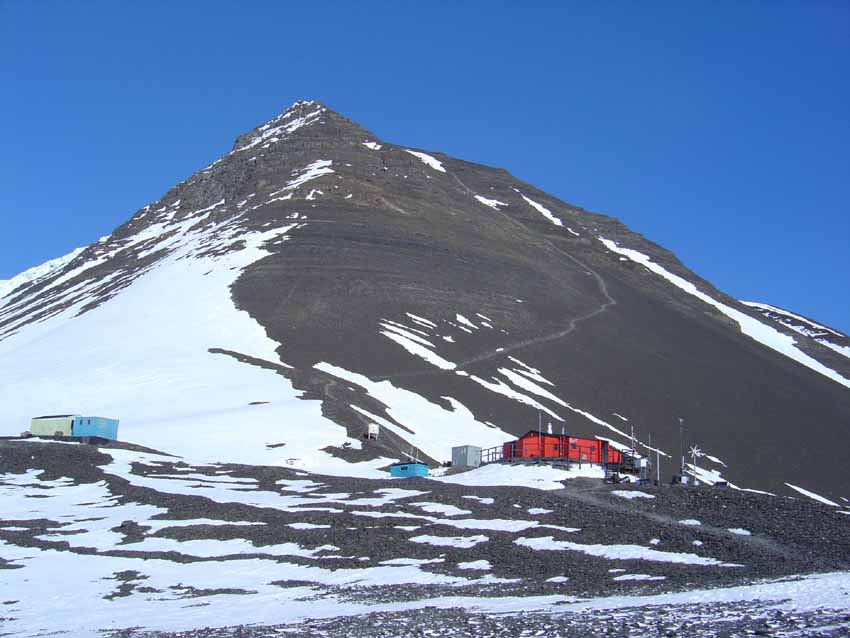Alexander Island
Alexander Island is the largest island of Antarctica. It lies in the Bellingshausen Sea west of the Antarctic Peninsula from which it is separated by Marguerite Bay and George VI Sound. The island is about 390 kilometers (240 mi) long in a north-south direction, 80 kilometers (50 mi) wide in the north, and 240 kilometers (150 mi) wide in the south.
Alexander Island is the second largest uninhabited island in the world, after Devon Island, in northern Canada.
History
Alexander Island was discovered on January 28, 1821 by a Russian expedition under Fabian Gottlieb von Bellingshausen, who named it "Alexander I Land" for the reigning Tsar Alexander I of Russia. What in fact is an island, was believed to be part of the Antarctic mainland until 1940. Its insular nature was proven in December 1940, by a two-person sledge party composed of Finn Ronne and Carl Eklund of the United States AntarcticService. In the 1950s, a British base administered as part of the British Antarctic Territory was constructed as Fossil Bluff (Base KG).
The island was claimed by the United Kingdom in 1908 as part of the British Antarctic Territory. Territorial claims have also been set by both Chile (in 1940) and Argentina (in 1942). Currently, under the Antarctic Treaty no claim has been officially recognized. The island contains the British Fossil Bluff meteorological center and refueling base.
Geography
The surface of Alexander Island is predominantly ice-covered. There exist some exposed nunataks and a few ice free areas of significant size. The nunataks are the peaks of north-south trending mountain ranges and hills. These mountains, peaks, hills, and uplands are surrounded by a permanent ice sheet, which consists of glaciers that flow off of Alexander Island. These glaciers flow west into the Bach and Wilkins Ice Shelves and Bellingshausen Sea, and east into the George VI Ice Shelf. The George VI Ice Shelf is fed by both by outlet glaciers from the ice cap on Palmer Land and Alexander Island.
Another notable feature of Alexander Island is Hodgson Lake. It is a former subglacial lake that has emerged from under an ice sheet that covered it. It is 2 km (1.2 mi) long by 1.5 km (0.93 mi), and has a 93.4 m (306 ft) deep water column that lies sealed beneath a 3.6 to 4.0 m (11.8 to 13.1 ft) thick perennial lake ice. The northern side of this lake is bounded by the Saturn Glacier, which flows east into George VI Sound, while the southern side of Hodgson Lake is bounded by the northern face of Citadel Bastion. During the Last Glacial Maximum, Hodgson Lake was covered by the ice sheet at least 470 m (1,540 ft) thick. This ice sheet started thinning about 13,500 years ago. It retreated and left Hodgson Lake covered by perennial ice sometime before 11,000 years ago. This lake has been covered by perennial ice since that time.
